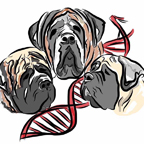Hemangiosarcoma
"Hemangiosarcomas are malignant tumors derived from the cells lining blood vessels (hem = blood, angio = vessel, sarcoma = tumor). Hemangiosarcoma is a common cancer in dogs accounting for approximately 5% of cases. Since blood vessels run throughout the body, hemangiosarcomas can develop anywhere. However, the most common sites are the skin, spleen, liver, and heart. Most hemangiosarcomas (except some appearing in the skin) are both locally aggressive and have a high likelihood of spreading to other parts of the body. These tumors are typically filled with blood and very fragile."2
Lymphoma
"Canine lymphoma is one of the most common cancers diagnosed in dogs today, accounting for up to 24% of all new canine cancers. It is a cancer of lymphocytes (a type of white blood cell) and lymphoid tissues. Lymphoid tissue is normally present in many places in the body, including lymph nodes, spleen, liver, digestive tract, and bone marrow. In most cases, we do not know what causes lymphoma. The most common form of lymphoma in dogs is the involvement of one or more of the external lymph nodes."3
Mast Cell Tumors
"Mast cell tumors are the most common skin tumor in dogs, with between seven and 21 percent of all canine skin tumors being mast cell tumors. Mast cell tumors do not have to involve the skin and can develop internally but most of the time there is skin involvement."4
Osteosarcoma
"Bone cancer is a common cancer in dogs, especially in large and giant breeds. Approximately 85 percent of canine bone tumors are osteosarcomas (osteo = bone, sarcoma = cancer). Osteosarcomas are highly aggressive tumors, characterized by painful bone destruction where the tumor grows. Osteosarcoma commonly affects the limbs of dogs but can also occur in other parts of the body (skull, ribs, vertebrae, pelvis). It happens in smaller dogs but much less commonly than in larger breed dogs. In about 80 percent of patients, the cancer will spread to the lungs. The biological behavior, prognosis, and treatment of bone tumors depend on tumor type, primary location, and extent of disease spread. Various diagnostic tests such as X-rays, blood tests, and sometimes a biopsy are required to determine the most appropriate treatment."5
